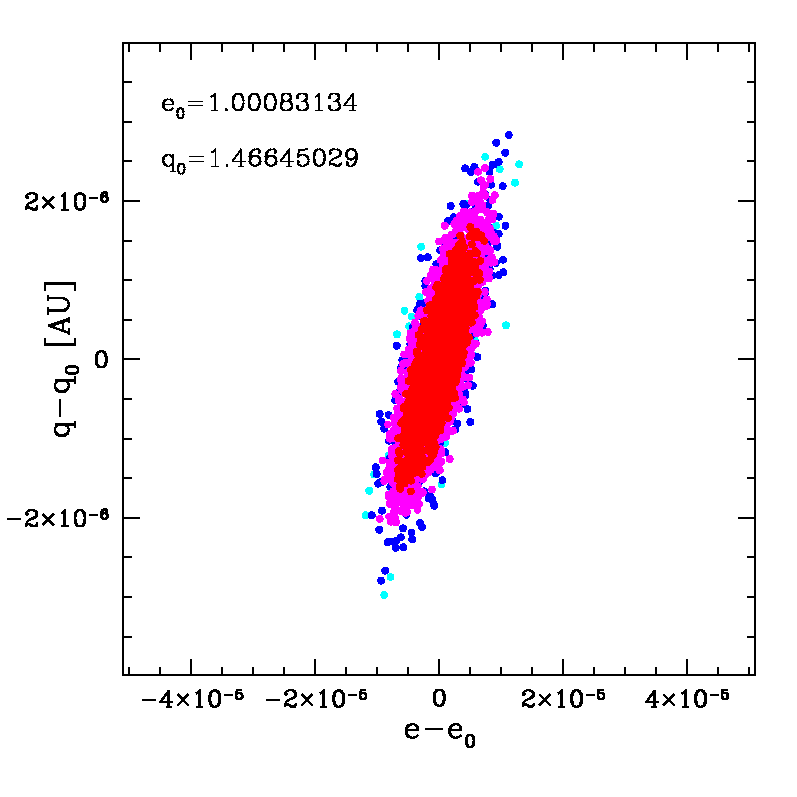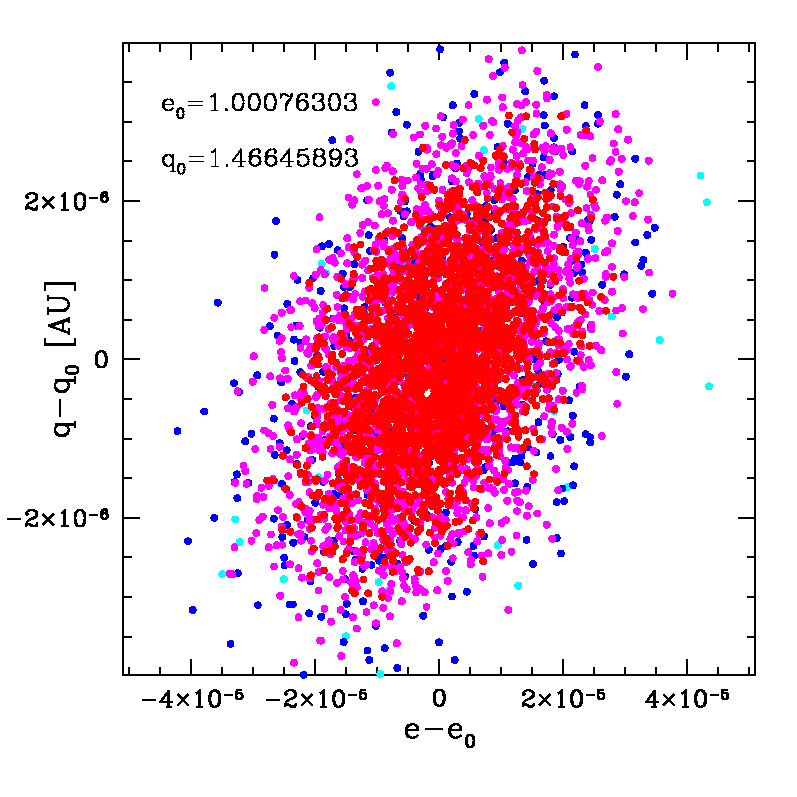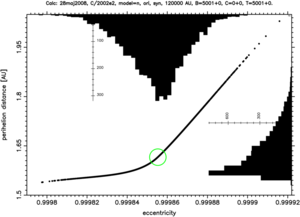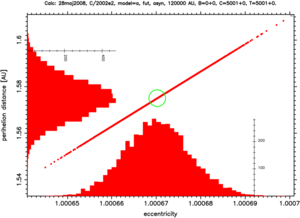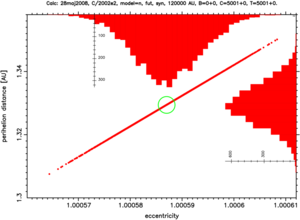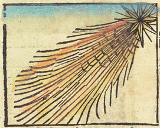Nongravitational nominal solution
Observational arc: 2002 03 08 - 2003 01 08 Number of observations: 941 RMS: 0.57 arcsec (1863 residuals used, 5.7% rejected residuals )
Heliocentric osculating orbit
Epoch Perihelion time q e ω Ω i
2002 02 15 20020221.798122 1.46645893 1.00076303 9.038271 244.583534 92.545707
± 0.000269 0.00000133 0.00001166 0.000227 0.000030 0.000012
NG parameters:
A1 = (2.7802 ± 0.2322 )×10-8 AU/day2
A2 = (0.87888± 0.19405)×10-8 AU/day2
A3 = 0 (assumed)
Barycentric nominal original orbit (at 250 AU from the Sun)
Epoch Perihelion time q e ω Ω i
1702 02 28 20020221.797582 1.47022961 0.99986829 9.049568 245.353318 92.549022
± 0.000761 0.00000456 0.00001822 0.000626 0.000021 0.000010
1/aori = (+89.59 ± 12.39)×10-6 AU-1
Barycentric nominal future orbit (at 250 AU from the Sun)
Epoch Perihelion time q e ω Ω i
2296 04 14 20020222.046158 1.46932103 1.00064899 9.076440 245.277909 92.490846
± 0.000226 0.00000117 0.00000410 0.000082 0.000025 0.000009
1/afut = (-441.69 ± 2.79)×10-6 AU-1
In the 17th edition of the Catalogue of Cometary orbits (2008):
Gravitational orbit (661 obs., shorter arc) with 1/aori > 10-4 AU-1.
The same comet in some other internet sources:
More details
Starting swarms of VCs...(heliocentric, osculating orbits)
Original and future orbit at the 250 AU from the Sun.
Comet number 23 in the Table: Nongravitational Oort spike comets (26 objects)
| Name | GR (1/a)ori [10-8 AU/day2] | GR (1/a)osc [10-8 AU/day2] epoch [TT] | GR 1/afut [10-8 AU/day2] | RMSGR [arcsec] | NG (1/a)ori [10-8 AU/day2] | NG (1/a)osc [10-8 AU/day2] epoch [TT] | NG 1/afut [10-8 AU/day2] | RMSNG [arcsec] | NG parameters A1 A2 A3 [10-8 AU/day2] tau shift [day] | |
| 23 | C/2002 E2 Snyder-Murakami weighting | +42.95 ± 2.31 | -566.91 ± 2.26 2002 02 15 | -425.73 ± 2.31 | 0.61 | +89.59 ± 12.39 | -520.32 ± 7.95 2002 02 15 | -441.69 ± 2.79 | 0.57 | 2.7802 ± 0.2322 0.8789 ± 0.1940 |
Note: in the following plots black denotes returning clones while red denotes escaping ones.The nominal solution is located at the center of the green circle. Each plot have a header where date of calculation and some other parameters are coded. Also numbers of returning (B=shown+omitted), escaping (C=shown+omitted) and all (T=shown+omitted) Vcs are shown.
Past orbit, at previous perihelion for the returning VCs :
Future orbits, at the escape border (no returning VCs) :
